The Engelsberg Ironworks is situated near Ängelsberg, a small village within the municipality of Fagersta in the province of Västmanland, about 164 km northwest of Stockholm in Sweden. The village of Ängelsberg is surrounded by the Norberg mining area, the area had numerous minig pits. In this remote area, ironmaking traditions go back to the Middle Ages. In the first instance, iron working at Engelsberg was carried out by peasant-ironworkers. Already in the 16th century a furnace existed in Engelsberg. The Engelsberg Ironworks was founded in 1681, the ironworks could be ranked among the most important ironworks in Europe and the world's most modern ironworks in the period 1700-1800. The Engelsberg Ironworks was closed down in 1919, due to the competition of foreign ironworks with modern technology. Engelsberg Ironworks is one of the best preserved ironworks in Sweden. The Engelsberg Ironworks still preseves the industrial buildings, technical equipment, a mansion, offices and workers' houses. The wooden buildings of Engelsberg Ironworks are painted with Falu-red paint. Engelsberg Ironworks was declared a UNESCO World Heritage in 1993.
www.werelderfgoedfotos.nl © Copyright World Heritage Photos
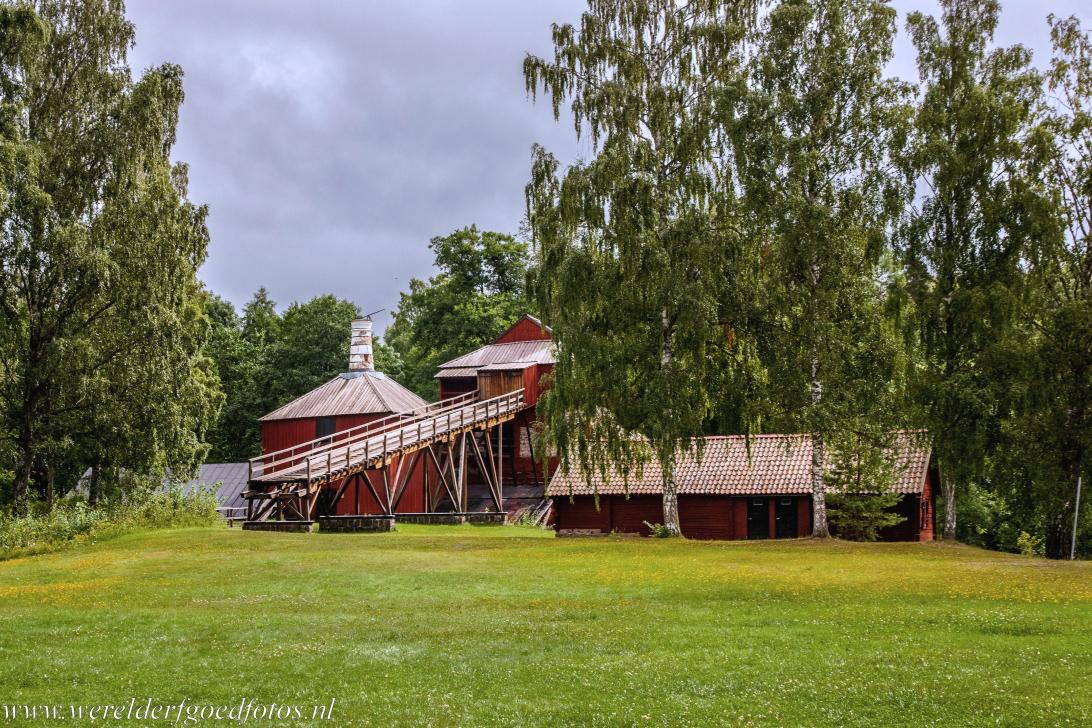
The Engelsberg Ironworks is an important example of an European industrial complex of the 17th-19th centuries. Engelsberg Ironworks was founded in 1681 and could be ranked among the most important ironworks in Europe and the world's most modern ironworks in the period 1700-1800. The Engelsberg Ironworks gained the status as a UNESCO World Heritage in 1993.

The Engelsberg Ironworks is an important example of an European industrial complex of the 17th-19th centuries. Engelsberg Ironworks was founded in 1681 and could be ranked among the most important ironworks in Europe and the world's most modern ironworks in the period 1700-1800. The Engelsberg Ironworks gained the status as a UNESCO World Heritage in 1993.
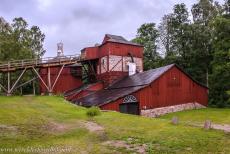
Engelsberg Ironworks: The smelting house contains the blast furnace, the smelting house is one of the few remaining smelting houses of this type in Sweden. Ironmaking in the Norberg mining district can be traced back to the Middle Ages, originally iron working at Engelsberg was carried out by peasant / ironworkers.
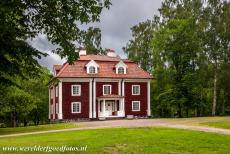
The Falu-red painted office building of the Engelsberg Ironworks, the Engelsberg Ironworks is a historic mill in central Sweden that has preserved most of the technical equipment as well as several buildings such as workers' houses, the house of the foreman, a manor house, a forge and several office buildings.
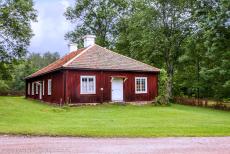
Engelsberg Ironworks: The houses for the workers were situated away from the central working area. Most of the wooden buildings of the Engelsberg Ironworks are painted with Falu-red, the traditional Swedish dark red paint. The Engelsberg Ironworks is situated in the historic Norberg mining district, in the village of Ängelsberg in Västmanland in central Sweden.
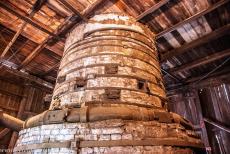
The kiln shaft of the huge brick blast furnace of the Engelsberg Ironworks is about 5.8 metres high. The machinery of the Engelsberg Ironworks is driven by two wooden water wheels and a turbine. The Engelsberg Ironworks is the best preserved and the most complete example of this type of Ironworks in Sweden.
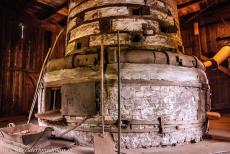
Engelsberg Ironworks: The blast furnace is one of the few earth-and-timber furnaces preserved in Sweden. The Engelsberg Ironworks was closed down in 1919, mainly due to the competition of foreign ironworks with modern technology, such as the Völklingen Ironworks in Germany. The Engelsberg Ironworks was inscribed on the UNESCO World Heritage List in 1993.
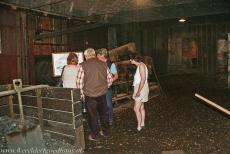
Engelsberg Ironworks: The charcoal storage. The charcoal was important for heating. The charcoal was produced from trees, that came from the nearby forests. The iron ore came from the Norberg and Bergslagen mines, situated northt of Lake Mälaren in northern Svealand, the historical core region of Sweden.
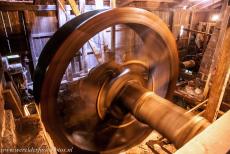
Engelsberg Ironworks: The water wheel is still in working condition, the bellows was powered by this wooden water wheel. The introduction of the water wheel led to the rapid development of the Swedish iron industry. The Engelsberg Ironworks (Swedish: Engelsbergse Bruk) can only be visited by a guided tour. The Engelsberg Ironworks are only open during the summer months.
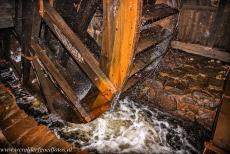
Engelsberg Ironworks: During the guided tour the guide will start the water wheel. The bellows was powered by this wooden water wheel. Most of the technical equipment is still operational. The English-speaking guides of the Engelsberg Ironworks are well spoken and contribute with a lot of extra information about the ironworks.
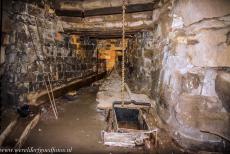
Engelsberg Ironworks: The tapping runnel of the blast furnace. The Engelsberg Ironworks is preserved as it looked after the last rebuilding around 1870 and has preserved most of the technical equipment. Once, the Engelsberg Ironworks consisted of about fifty buildings. The Engelsberg Ironworks was closed down in 1919.
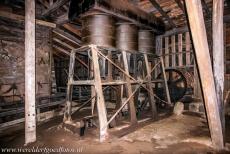
Engelsberg Ironworks: The pistons regulated the blast of air in the blast furnace. Engelsberg Ironworks is a good example of an European ironwork from the 17th to the 19th centuries, it preserves most of its buildings and the technical equipment. The Engelsberg Ironworks was named after Englika, a settler from Germany, who lived here in the 14th century.
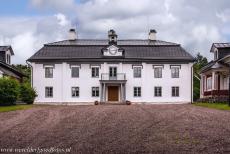
Engelsberg Ironworks: The manor house was built around 1700, probably as a single-storey building. The manor house of Engelsberg was rebuilt after a fire in the 1740's, with two storeys and a mansard roof, based on French manor houses. The clock tower above the main entrance dates from 1830. The porch is adorned with Ionic pillars.
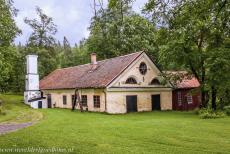
Engelsberg Ironworks: The first blacksmith's forge was built in 1624, known as the Manor Forge. The forge was rebuilt in 1845, the forge contained two hammers and a three-cylinder blower, all powered by water wheels. The forge of the Engelsberg Ironworks is one of the best preserved examples of its type.
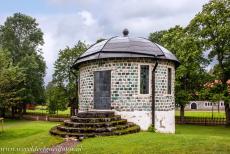
Engelsberg Ironworks: An ornamental slag-stone tower near the Engelsberg manor house. Slag-stone is a byproduct of the metallurgical smelting process. Two of these ornamental slag-stones towers were built in the 1780's. One of them was used as a summer house, the other one was used as a outhouse or lavatory.
